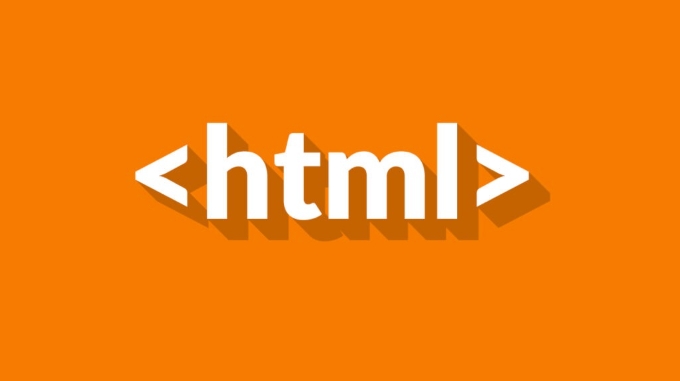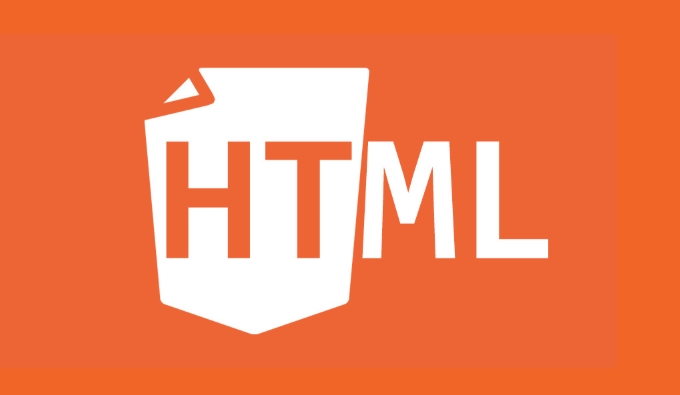The viewport meta tag is used to control how web pages are displayed on mobile devices and ensure that the pages are adapted to the screen. Its core function is to prevent the browser from rendering the page with desktop width, making the text too small and the layout compact. The correct way to set it is to add <meta name="viewport" content="width=device-width, initial-scale=1"> in the HTML
, where width=device-width sets the page width equal to the device width, and initial-scale=1 sets the initial scaling ratio to 1. Optional parameters include maximum-scale limiting maximum magnification, user-scalable control whether manual scaling is allowed, but disabling scaling is not recommended. Common problems include fixed-width layout, third-party plug-ins affect responsive design, wrong setting of scaling parameters, etc. The key to the solution lies in the overall adoption of responsive design principles.
The viewport meta tag in HTML is a key element used to control how web pages are displayed on mobile devices. Simply put, it tells the phone browser how to scale and resize the page to fit the screen.

Why do mobile terminals need to set viewport?
When you open a web page on your phone that does not set the viewport correctly, the browser usually uses "desktop width" to render the page (such as 980px) and then narrows the page and displays it on the screen. The result is that the text is too small and the layout is compact, and users must manually enlarge it to see the content clearly.

After setting up a suitable viewport, the web page can be adapted according to the actual screen size of the device, providing a more friendly browsing experience.
How to use the viewport meta tag correctly?
The basic way to write viewport is to add the following code to the area of ??HTML:

<meta name="viewport" content="width=device-width, initial-scale=1">
Here are two key parameters:
-
width=device-width: Make the width of the page equal to the screen width of the device. -
initial-scale=1: Set the initial scaling ratio to 1 to ensure that the page is not automatically scaled.
You can also add some extra options, such as:
-
maximum-scale=1: limits the maximum enlargement of the user. -
user-scalable=no: prohibits user scaling manually (but this is generally not recommended).
These settings can be flexibly combined according to website needs, but in most cases it is just to keep it simple.
Frequently Asked Questions and Precautions
Sometimes even if the viewport tag is added, the page still displays an exception. Common reasons include:
- There is a fixed width layout in the page (such as width: 960px is set), which will make it impossible to adapt on small screens.
- Third-party ads or plug-ins ignore responsive design, destroying the overall layout.
- The maximum-scale or user-scalable is set incorrectly, affecting the user experience.
The key to solving these problems is to ensure that the entire page adopts responsive design principles, rather than just adding a viewport tag.
Basically that's it. Although viewport is just a line of code in HTML, it is crucial for mobile display. Many people tend to ignore it at the beginning, and they don’t check it until the page looks weird on their phones. In fact, just remember one thing: if the mobile terminal needs to adapt to the screen, it has to rely on viewport to enable this ability.
The above is the detailed content of What is the viewport meta tag in HTML for?. For more information, please follow other related articles on the PHP Chinese website!

Hot AI Tools

Undress AI Tool
Undress images for free

Undresser.AI Undress
AI-powered app for creating realistic nude photos

AI Clothes Remover
Online AI tool for removing clothes from photos.

Clothoff.io
AI clothes remover

Video Face Swap
Swap faces in any video effortlessly with our completely free AI face swap tool!

Hot Article

Hot Tools

Notepad++7.3.1
Easy-to-use and free code editor

SublimeText3 Chinese version
Chinese version, very easy to use

Zend Studio 13.0.1
Powerful PHP integrated development environment

Dreamweaver CS6
Visual web development tools

SublimeText3 Mac version
God-level code editing software (SublimeText3)

Hot Topics
 Explain the purpose of the role attribute in ARIA.
Jun 14, 2025 am 12:35 AM
Explain the purpose of the role attribute in ARIA.
Jun 14, 2025 am 12:35 AM
ARIA's role attribute is used to define the role of web elements and improve accessibility. 1. Role attribute helps assistive technology to understand the functions of elements, such as buttons, navigation, etc. 2. Use role attributes to assign specific roles to non-semantic HTML elements. 3. The role attribute should be consistent with the element behavior and be verified by the accessibility tool test.
 HTML and Design: Creating the Visual Layout of Websites
Jun 14, 2025 am 12:39 AM
HTML and Design: Creating the Visual Layout of Websites
Jun 14, 2025 am 12:39 AM
How to create a website layout? 1. Use HTML tags to define the content structure, such as, ,. 2. Control styles and positions through CSS, using box model, float or Flexbox layout. 3. Optimize performance, reduce HTTP requests, use cache and optimize images, and ensure responsive design.
 How do I stay up-to-date with the latest HTML standards and best practices?
Jun 20, 2025 am 08:33 AM
How do I stay up-to-date with the latest HTML standards and best practices?
Jun 20, 2025 am 08:33 AM
The key to keep up with HTML standards and best practices is to do it intentionally rather than follow it blindly. First, follow the summary or update logs of official sources such as WHATWG and W3C, understand new tags (such as) and attributes, and use them as references to solve difficult problems; second, subscribe to trusted web development newsletters and blogs, spend 10-15 minutes a week to browse updates, focus on actual use cases rather than just collecting articles; second, use developer tools and linters such as HTMLHint to optimize the code structure through instant feedback; finally, interact with the developer community, share experiences and learn other people's practical skills, so as to continuously improve HTML skills.
 How do I use the element to represent the main content of a document?
Jun 19, 2025 pm 11:09 PM
How do I use the element to represent the main content of a document?
Jun 19, 2025 pm 11:09 PM
The reason for using tags is to improve the semantic structure and accessibility of web pages, make it easier for screen readers and search engines to understand page content, and allow users to quickly jump to core content. Here are the key points: 1. Each page should contain only one element; 2. It should not include content that is repeated across pages (such as sidebars or footers); 3. It can be used in conjunction with ARIA properties to enhance accessibility. Usually located after and before, it is used to wrap unique page content, such as articles, forms or product details, and should be avoided in, or in; to improve accessibility, aria-labeledby or aria-label can be used to clearly identify parts.
 How do I create a basic HTML document?
Jun 19, 2025 pm 11:01 PM
How do I create a basic HTML document?
Jun 19, 2025 pm 11:01 PM
To create a basic HTML document, you first need to understand its basic structure and write code in a standard format. 1. Use the declaration document type at the beginning; 2. Use the tag to wrap the entire content; 3. Include and two main parts in it, which are used to store metadata such as titles, style sheet links, etc., and include user-visible content such as titles, paragraphs, pictures and links; 4. Save the file in .html format and open the viewing effect in the browser; 5. Then you can gradually add more elements to enrich the page content. Follow these steps to quickly build a basic web page.
 What is an HTML tag?
Jun 13, 2025 am 12:36 AM
What is an HTML tag?
Jun 13, 2025 am 12:36 AM
HTMLtagsareessentialforstructuringwebpages.Theydefinecontentandlayoutusinganglebrackets,ofteninpairslikeand,withsomebeingself-closinglike.HTMLtagsarecrucialforcreatingstructured,accessible,andSEO-friendlywebpages.
 How do I create checkboxes in HTML using the element?
Jun 19, 2025 pm 11:41 PM
How do I create checkboxes in HTML using the element?
Jun 19, 2025 pm 11:41 PM
To create an HTML checkbox, use the type attribute to set the element of the checkbox. 1. The basic structure includes id, name and label tags to ensure that clicking text can switch options; 2. Multiple related check boxes should use the same name but different values, and wrap them with fieldset to improve accessibility; 3. Hide native controls when customizing styles and use CSS to design alternative elements while maintaining the complete functions; 4. Ensure availability, pair labels, support keyboard navigation, and avoid relying on only visual prompts. The above steps can help developers correctly implement checkbox components that have both functional and aesthetics.
 How do I minimize the size of HTML files?
Jun 24, 2025 am 12:53 AM
How do I minimize the size of HTML files?
Jun 24, 2025 am 12:53 AM
To reduce the size of HTML files, you need to clean up redundant code, compress content, and optimize structure. 1. Delete unused tags, comments and extra blanks to reduce volume; 2. Move inline CSS and JavaScript to external files and merge multiple scripts or style blocks; 3. Simplify label syntax without affecting parsing, such as omitting optional closed tags or using short attributes; 4. After cleaning, enable server-side compression technologies such as Gzip or Brotli to further reduce the transmission volume. These steps can significantly improve page loading performance without sacrificing functionality.






